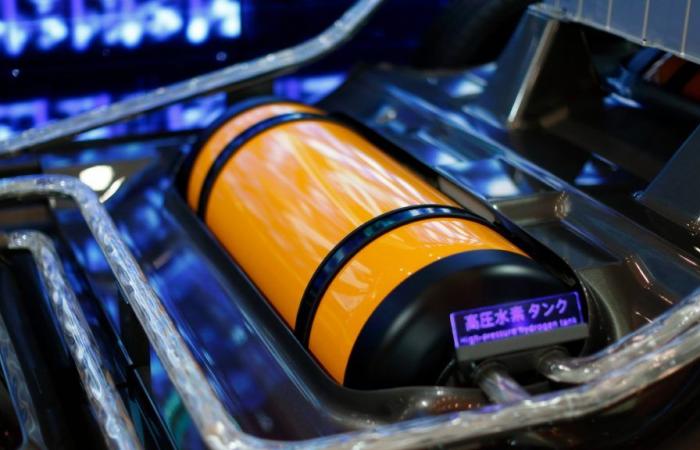An Asian automotive company has achieved a historic milestone for its most sustainable vehicle model yet. According to the details offered by the company, The fleet has traveled its first 10 million kilometers with records of autonomy and efficiency thanks to the blue fuel it supplies for its mobility. Meet the pioneering brand in marking this milestone.
What is the vehicle that has set this historical record?
The Korean company Hyundai Motor Company, recognized for its high-tech vehicles and committed to the environment, has launched an entire brand that covers the entire hydrogen value chain, from its production, storage, transportation and supply.
In this context, your XCIENT Fuel Cell electric heavy truck line composed of blue fuel Sent in 2020 to Switzerland, they have traveled about 10 million km, without presenting any type of safety failures.
This achievement of the company is one of the goals achieved by its HTWO technology with the development of the blue fuel cell system through the production of energy by electrolysis from organic waste and plastic.
The objectives towards 2050 are increasingly closer for Hyundai that with its green energy and its HTWO technology It has reached not only Switzerland, but 10 other countries including the United States, Germany, France, the Netherlands, New Zealand, Korea, Israel and the United Arab Emirates.
Features of the XCIENT Fuel Cell
Hyundai’s heavy-duty vehicle is equipped with two fuel cell systems of 90 kW each, meaning a total of about 180 kW of power, and a 350 kW electric motor, which offers a range of 400 km.
The 48 XCIENT Fuel Cell units sent to Switzerland to carry out logistics operations, heavy loads and retail transfers, offer greater energy efficiency on long-distance trips, reduces economic and ecological costs without using oils or ureas and they are quieter.
The success of the fleet of trucks with blue fuel technology in just three and a half years of operation represents a significant reduction in the carbon footprint. In this sense, the distance traveled by the same number of vehicles powered by fossil fuel makes an abysmal difference.
The carbon dioxide emission figure would have been close to 6,300 tonsfor which there would have to be 700,000 pine trees, or the creation of a 508-hectare pine forest to absorb the footprint.
Future goals for blue fuel vehicles
The Hyundai sub-brand created to supply the entire Group with HTWO technology was presented in the West, within the framework of the Consumer Electronic Show (CES) 2024 in Las Vegas. In this way, it hopes to bring the transition towards sustainability through blue fuel to the entire world.
In this context, it has implemented the NorCAL ZERO Project, which included the incorporation of 30 XCIENT Fuel Cell trucks in California for the transport of cargo containers and vehicles. In addition, the Clean Logistics Project is in force at its own production plant in Georgia.
Hyundai’s sustainable objectives hope to be replicated throughout the planet, with the line of zero-emission fuel trucks and with the development throughout the entire value chain of hydrogen as a reliable method in the transition and substitution of fossil fuels.
Hyundai’s solutions for the future from blue fuel include trams, special equipment, vessels, power generators and advanced air mobilityso its line of trucks will continue to consolidate its success and will mark the beginning of a new, more sustainable form of mobility applicable to the entire variety of vehicles.


